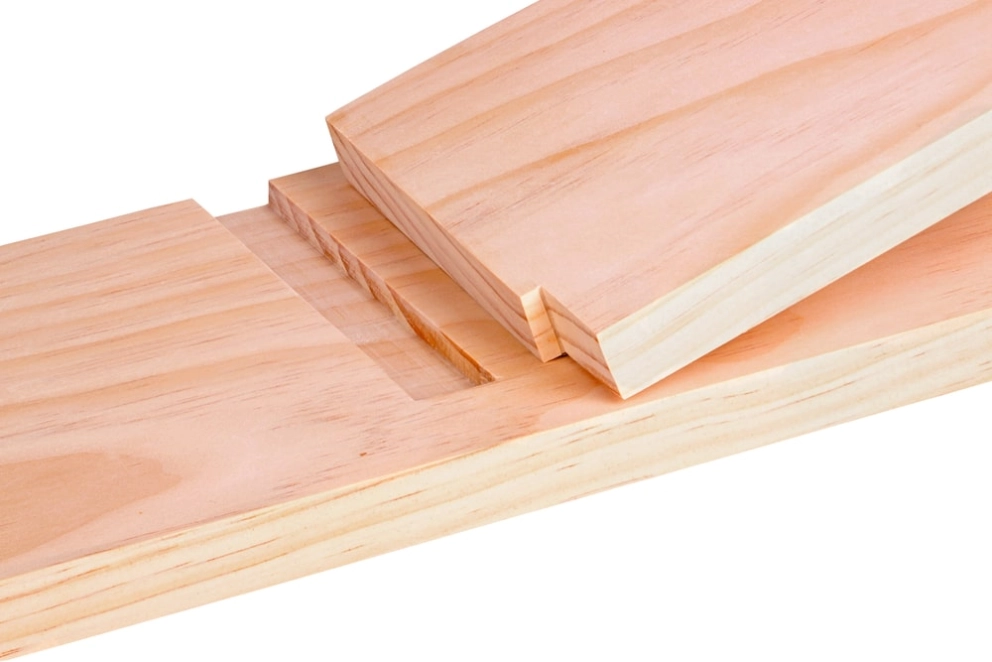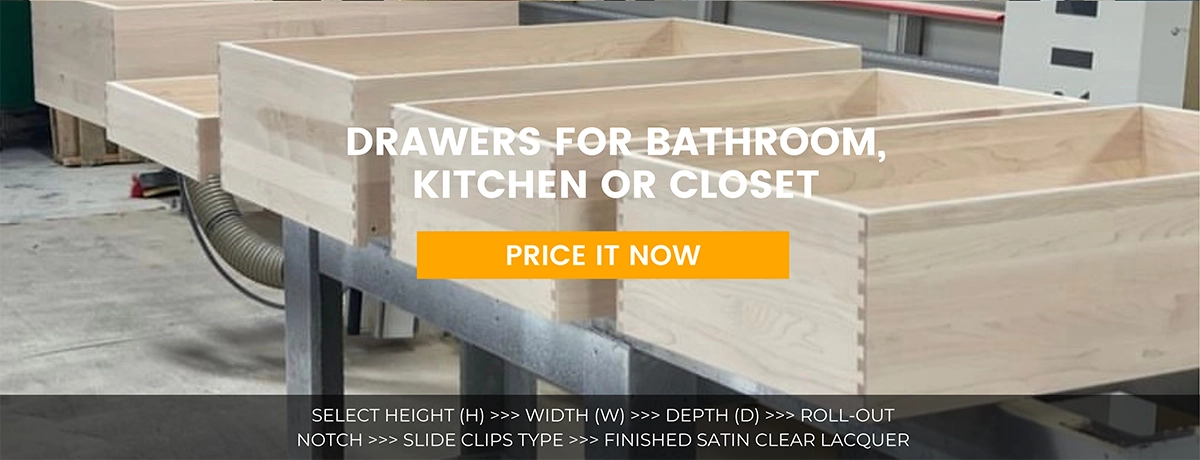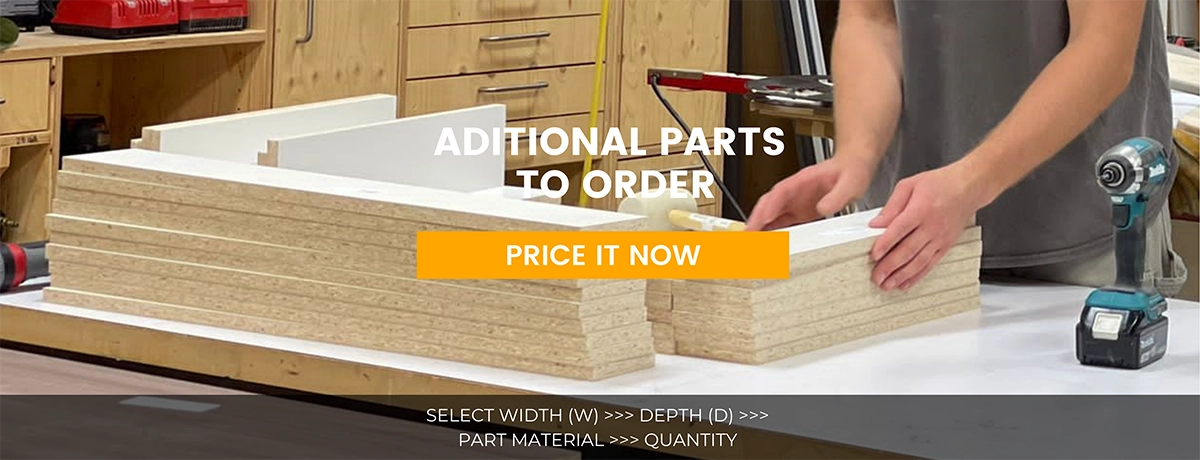What Is A Dovetail Drawer and Is It Better Than Standard Drawer?
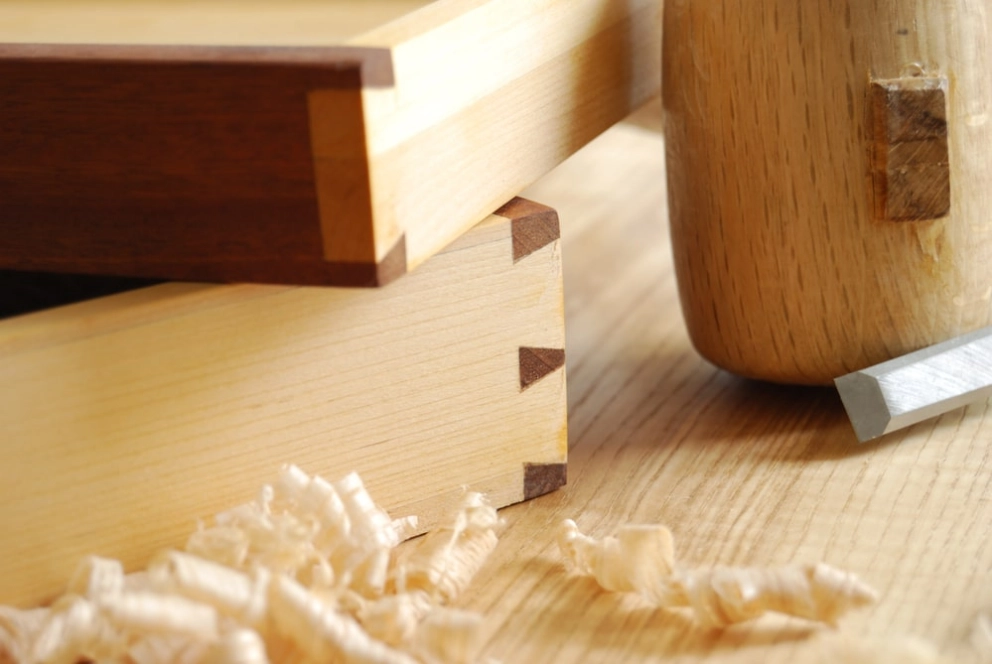
Whether the cabinets are in your home in the kitchen, bathroom, closet or wardrobe, they are equipped with drawers. The construction of the drawer implies it is capacious and durable enough to endure the weight of stuff you put there. To be stable for this role a drawer should have a strong construction. When it comes to drawer boxes, we pay a lot of attention to the sliding mechanisms and the bottom thickness. There is one more parameter, it is drawer joints. Joints can tell you a lot about the quality of the structure, as well as how long such a drawer will last.
There are different drawer joint construction, such as mortise butt and tenon joints, but when it comes to high-quality kitchen and bathroom cabinetry, dovetail joinery is the preferred drawer manufacturing method nowadays. Cabinet dovetail drawers are known for their durability and larger storage capacity. The connection is secure and unlikely to loosen over time. The dovetail joinery is also an attractive detail when the wood is stained differently to highlight the joint.
What are dovetail drawers?
Dovetail drawers or dovetail cabinets refer to drawers that use the dovetail joinery technique to attach pieces of wood together to construct a drawer. A dovetail cabinet is common in kitchens where the drawers need to be stronger than standard drawers to hold heavy household equipment and cutlery. Dovetail kitchen drawers tend to be much more durable and heavy-duty. If you think your drawers are not sturdy, try to check if what you have are dovetail kitchen cabinets. If not, it’s probably time to switch from your typical standard one to a dovetail kitchen drawer.

What is dovetail construction?
Dovetail drawer construction refers to a type of drawer craftsmanship where the tongue-and-groove also known as tail and pin wood joinery method is used to securely attach various pieces of wood. What do dovetail drawers mean? Dovetail construction drawers mean that the cabinet has a tongue in its corner or dovetail corners which is basically a protruding piece of wood, while the groove is the area it occupies on the adjoining board.
Dovetail construction is a popular construction method not just in making drawers but also in floors, doors, panelling, and other architectural construction. The tongues of dovetail drawer joints resemble true dovetails, and the grooves are carved places to take those components. The broadest section of the dovetail is embedded in the other wooden panel. This makes removing the drawer's front very impossible. Typically, dovetail cabinets are not painted to highlight the natural wood grain colour of the wood and also make the details seen. However, you can also have dovetail paint cabinets without hiding the details. Designers often paint the tongue portion of the cabinet to contrast the groove. This is a great way to expose the details of the construction method.
What is a dovetail joint?
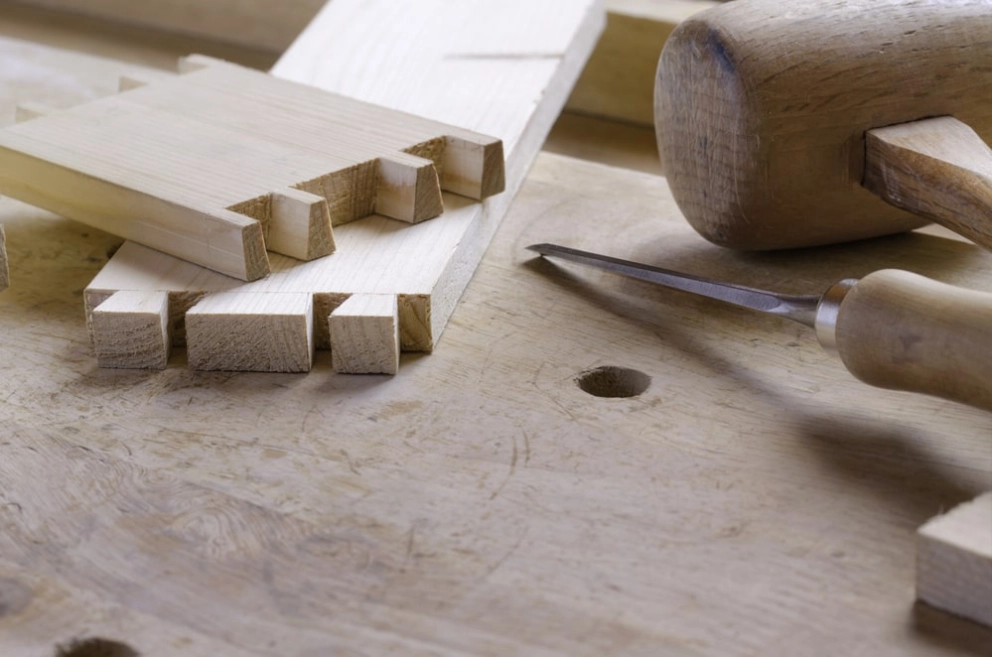
Let’s take a more detailed look at the dovetail drawer joints. The dovetail joint drawers are typically used to link the edges of a drawer to the front and are known for their tensile strength when pushed apart. Pins or tongues cut from one board's end interlock with the groove or tail on the other board's end. The tongue and groove dovetail key joint is shaped like a trapezoid. A hardwood dovetail joint construction demands no mechanical fasteners once it has been joined.
In the drawer construction joints shown in the image above, you can see that the tongue and groove are securely attached making the drawer sturdy and durable. This type of joinery can be used in any type of drawer, kitchen, side table, pantry, and dovetail joint dresser. It is one of the most popular wood joinery techniques that predates written history.
The Most Popular Dovetail Joint Types
There are various types of dovetail joints and different ways of interlocking pieces to make tongue and groove drawers. Below are the four most common dovetail constructions that can be seen in drawers and other types of furniture with storage boxes.
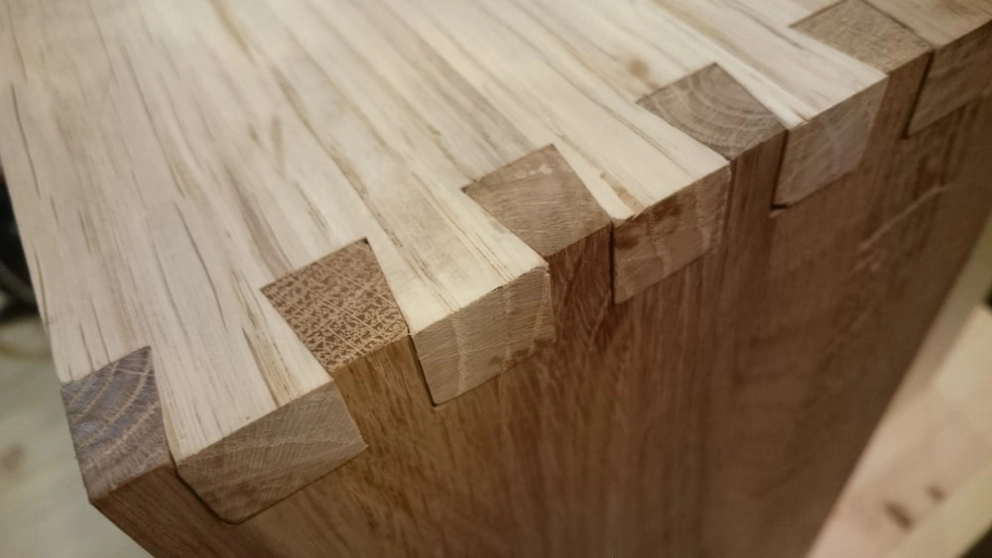
- Through or English dovetail joinery
Through dovetail joint is perhaps the most common among all others. The dovetail grain of both ends of the wood panel can be seen on both sides since they pass through each slice. Refer to the image above. Typically, a veneer would have been used to hide the dovetails. But in today’s modern era, dovetails are left bare to show the detailed craftsmanship of the drawers and cabinets. - Sliding or French dovetail joints
Sliding wood joints also known as French dovetails are basically two pieces of wood panel or board that are attached together by sliding the tongue against the groove. How to make a sliding dovetail joint? In French dovetail drawers, the groove is carved on the adjacent panel where the other panel will interlock. The interlocking stability of a dovetail is provided by this junction. The tail of a sliding dovetail is moved into the socket to complete the assembly. It's typical to taper the socket, keeping it somewhat tighter towards the back of the joint. Due to this, the two sections of the sliding dovetail drawers may be slid together easily but the joint becomes tighter as it completely interlocks with the adjoining board. - Half-blind dovetail
The half-blind dovetail is often used by craftsmen to conceal the end grain from the front joint. The tails are hidden by mortises in the ends of the board that serve as the item's front. This is the joinery that is used when the cabinet design is meant to have a drawer front. The dovetail details can be seen only on the side of the drawer rather than on the front. - Secret mitred dovetail
The secret dovetail joint is called such because no dovetail is visible on both the front and side of the drawer. It is only utilized in the most exclusive cabinet and box construction. By shaping the outside surface to connect at a 45-degree angle and burying the dovetails internally inside the joint, it provides the strength of a dovetail junction while being completely hidden from both exterior faces.
Pros and Cons of Dovetail Joints
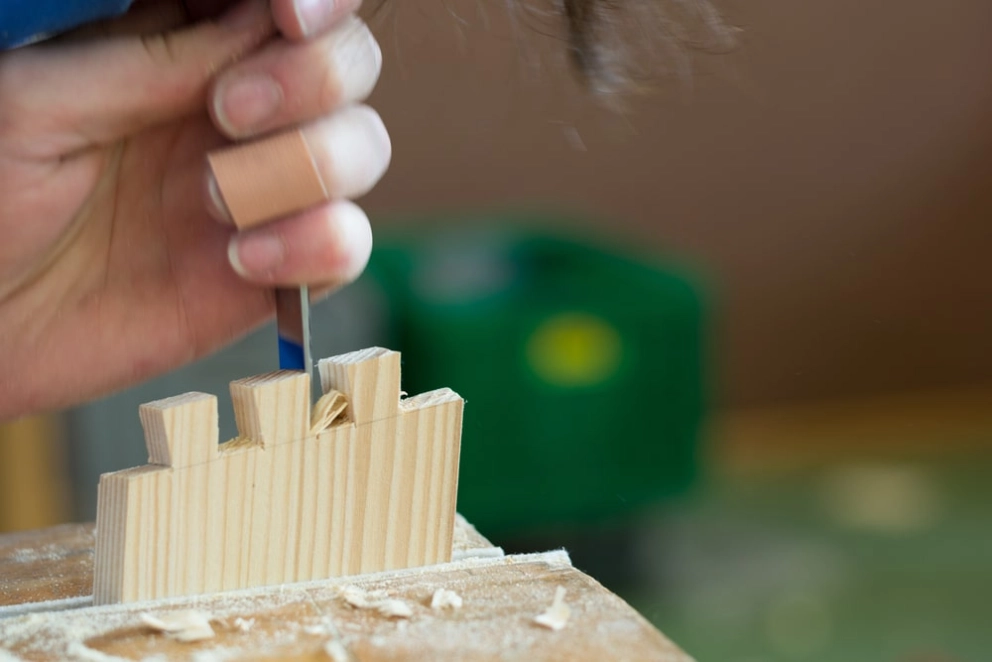
Like any other method of woodworking dovetail joints have their pros and cons:
|
Pros |
Cons |
|
They make durable and sturdy drawers |
Difficult to mark and cut |
|
No need for screws, nails, and other fastening equipment |
The tongue may not fit due to a minor cutting error |
|
They showcase beautiful craftsmanship |
Only solid wood and lumber can be dovetailed |
|
You can take dovetail joints apart if you wish to disassemble |
A loose fit would make the drawer unstable |
|
Don’t easily get pulled apart |
Not DIY friendly if you’re not skilled in carpentry |
|
Has a large gluing area |
Time-consuming and requires complex work |
